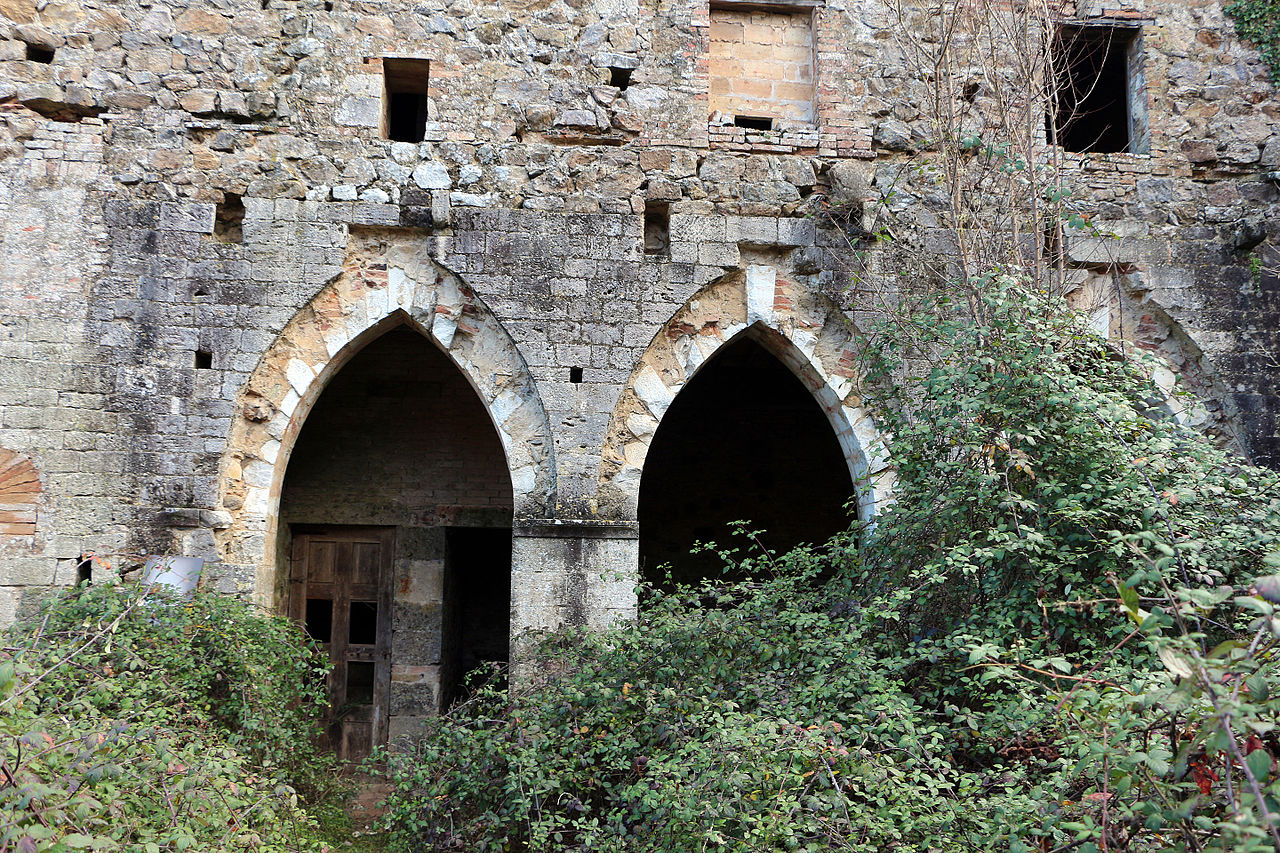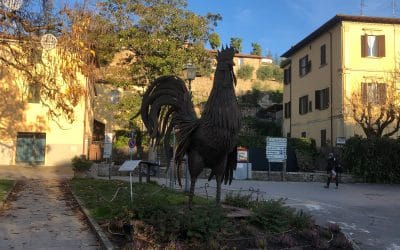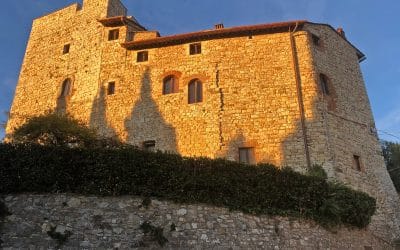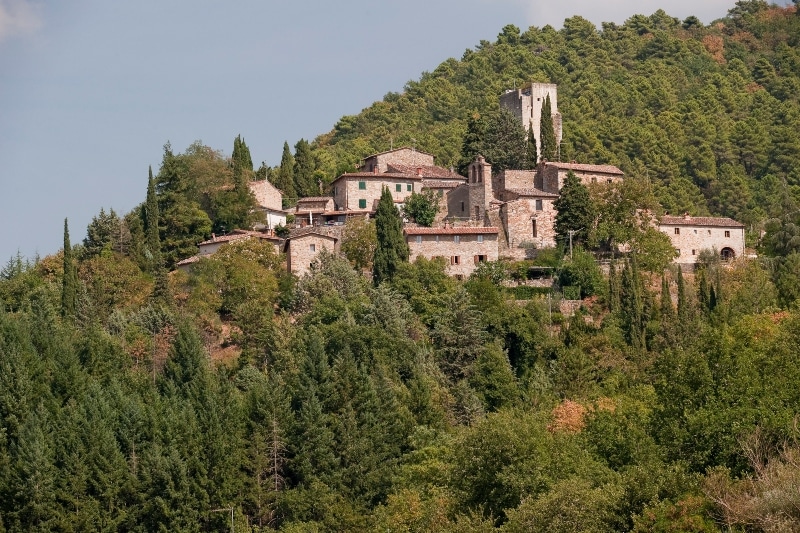Rosia
Between legend and modernity
Rosia is a fraction of the municipality of Sovicille and owes its name to the homonymous stream that flows nearby. When we think of this place we cannot fail to mention the Hermitage of Santa Lucia and the Ponte della Pia.
The hermitage of Santa Lucia is a sacred building located near Rosia. Its origins date back to before 1200 and are presumably due to the hermit Bonacorso who lived there. The hermit was later joined by several followers who made it necessary to build accommodation. In the years that followed, the dioceses of Siena and Volterra made the community official and granted indulgences to all those who made offerings to the community. The church, which was dedicated to Saint Lucy, is thought to date back to 1252 and its consecration to 1267.
A miracle is also said to have occurred in the hermitage, namely the transformation of water into wine by Prior Clemente da Osimo with a simple sign of the cross. The hermitage was suppressed by the diocese of Siena, although it continued to be inhabited by some friars for a long time. Throughout the Middle Ages, pilgrims and wayfarers travelling from Siena to the Colline Metallifere and the Maremma found hospitality here.
The hermitage of Santa Lucia is one of Tuscany's hidden gems and is located just beyond the Ponte della Pia, dedicated to Pia de' Tolomei mentioned by Dante in the Divine Comedy and more precisely in the fifth canto of the Purgatory.
Ponte della Pia crosses the Rosia stream at the border between the municipalities of Sovicille and Chiusdino. During the winter months and colder periods, the little water flowing under the bridge is often frozen, creating a truly fairy-tale scenario. The Ponte della Pia is a bridge of Roman origin and is linked to a legend or perhaps something more.
This consists of a single humpbacked arch and is supported by a scarp base to ensure that the waters of the stream below would not weaken its foundations. Even today it is still possible to cross it on foot. The present structure dates back to the early 13th century and connects the two banks of the Rosia stream. In the past, it played an important role along the route of the ancient Via Massetana, which connected Siena to the Maremma, and in particular to the Colline Metallifere and Massa Marittima, from which the name of the road derives.
According to popular history, the beautiful Pia de' Tolomei, wife of Nello d'Inghiramo de' Pannocchieschi, passed over this bridge. This event is also mentioned in a famous canto of the Purgatory of the Divine Comedy. Nello had Pia locked up in his castle in Maremma, forcing her to leave Siena forever: Pia walked the road to the sea for the last time, crossing the bridge that took her name.
A large number of books have been written on the figure of Pia, between reality and myth, some based on exclusively historical facts, others on the many tales of Tuscan folk tradition. Some versions claim that the woman was not able to give Nello an heir and therefore he had her killed by assassins. Others tell of a betrayal by the woman and the jealousy of her husband. Others tell us that Nello killed her so he could marry his lover, Margherita Aldobrandeschi. But all the stories have the same ending: Pia de' Tolomei was thrown from the bastion of the Castello della Pietra by her husband. So much so that even today there is a precipice referred to as the 'Countess's Leap' on which the Pietra Castle stands.
We will hardly know the truth. To add to the mystery, a legend has it that the ghost of the noblewoman appears on the bridge: some people swear that on moonless nights they have seen a motionless, peaceful figure, surrounded by a pale light, dressed in white with a veil covering her face.
Pia's human story is very far away from us in time. However, today Pia is a symbol of our times, which are so sadly filled with stories of women being abused, mistreated and murdered by violent and brutal men.
Continue with the discovery of Chianti...
Gaiole in Chianti
Gaiole in Chianti A market town for castles and surrounding areasGaiole in Chianti in the past was a city busy with local traffic, but after the end of the conflicts between Florence and Siena, it turned more towards agriculture, strengthening its position as a market...
Vertine
Vertine Fortified oasis in the Chianti mountains Vertine is one of the best preserved examples of military architecture in Chianti and more precisely in the municipality of Gaiole. The excellent condition in which it is located today, especially the castle with its...
Barbischio
Barbischio More than an ancient Florentine defenseThe Castle of Barbischio dominates the village of Gaiole In Chianti. In 1200, together with the nearby Montegrossi, Vertine and Meleto, Barbischio was part of the Florentine defences of this area of Chianti, bordering...




